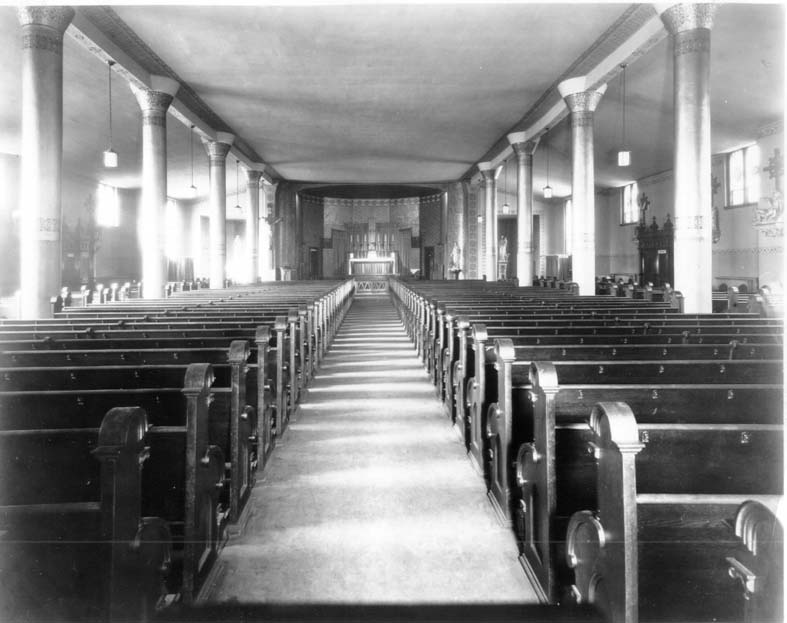Father Toner was released from his duties in the Beaver Valley area of the diocese, and came to the Garfield area in 1897. The first church constructed for the worship of people was located on Kincaid Streeet, in the 5300 block.
The first Baptism for the new parish was dated August 29, 1897. The first marriage was recorded November 16, 1897.
An unfortunate fire occurred int eh year 1906, which leveled the church on Kincaid Street.
Plans were then made to select a new site for the erection of a new church, and Father Toner chose the corner of North Atlantic and Penn Avenues as being a central point within the parish boundaries. During the time the church was being erected, the services were held in the Chapel of the Little Sisters of the Poor, located on Penn Avenue.
The church was ready for use in the year 1907, with plans to complete the church to follow.
It was during the time of Father Toner's Pastorate that the beginning of our present school was inaugurated (1918). In the year 1921, Father Toner, wishing to realize his dream of completing the church structure, held a Capital Funds Campaign in order to bring about this realization; however, sickness overtook Father Toner, and he was confined, due to this illness for a period of three years in Pittsburgh Hospital.
Upon his death, the Reverend Philip A. Callery was appointed Pastor by the late Bishop Hugh C. Boyle, D.D.
As the parish continued to develop and to grow in size, the need for more school facilities became quite apparent. It was Father Callery who decided, in consultation with the members of his church committee, to increase the facilities of the school building. Additional classrooms for the grade school were added, and the necessary facilities to handle the young ladies of our parish, for their high school education. Because of these developments, and because their need was so apparent, the plans to finish the church were then put aside.
It was during the Pastorate of Father Callery however, that the parish plant did grow, with the addition of the new school facilities, as well as a convent to fulfill the needs of the Sisters who would staff the school. In the year 1938 Father Callery was called in death, and upon his death the Reverend Carl P. Hensler was named Administrator for the parish.
In August of 1939, the Reverend Paul E. Campbell was appointed Pastor by the late Bishop Hugh C. Boyle, D.D. During the early years of Father Campbell's Pastorate, he was faced with the war years and the various conflicts that had resulted since that time. Father Campbell was aware that the church would have to be completed, so various Fund Drives were engaged in to realize this goal.
In the year 1960 ground was broken for further physical development of the parish plan in the erection of an Activities Building dedicated to the memory of Father Toner, the first resident pastor of St. Lawrence Church.
It was again in August of 1963 that the unfortunate occurrence developed that caused the closing of the church building, due to the unsafe condition of the roof structure.
Plans were begun in October of 1963, under the direction of Bishop John J. Writght, D.D., to erect a new church, using the materials that would correspond to the other buildings of our present plant. The thinking and developing stages of these plans for the new church took quite a bit of time, but the parishioners of St. Lawrence's graciously accepted the inconvenience placed upon them - using the Activities Building for all of their church purposes.
It was in August of 1965 that ground was officially broken, which began the building project.
The development of the building was done in such a manner so that space would be utilized o its greatest potential. For this reason, the building was placed at an angle to the corner of Penn Avenue and North Atlantic, thus giving access for the church from various positions.
The stained glass windows in the transepts of the church were developed with symbolisms of the Corporal Works of Mercy, since this was an outstanding virtue in the life of St. Lawrence O'Toole.

